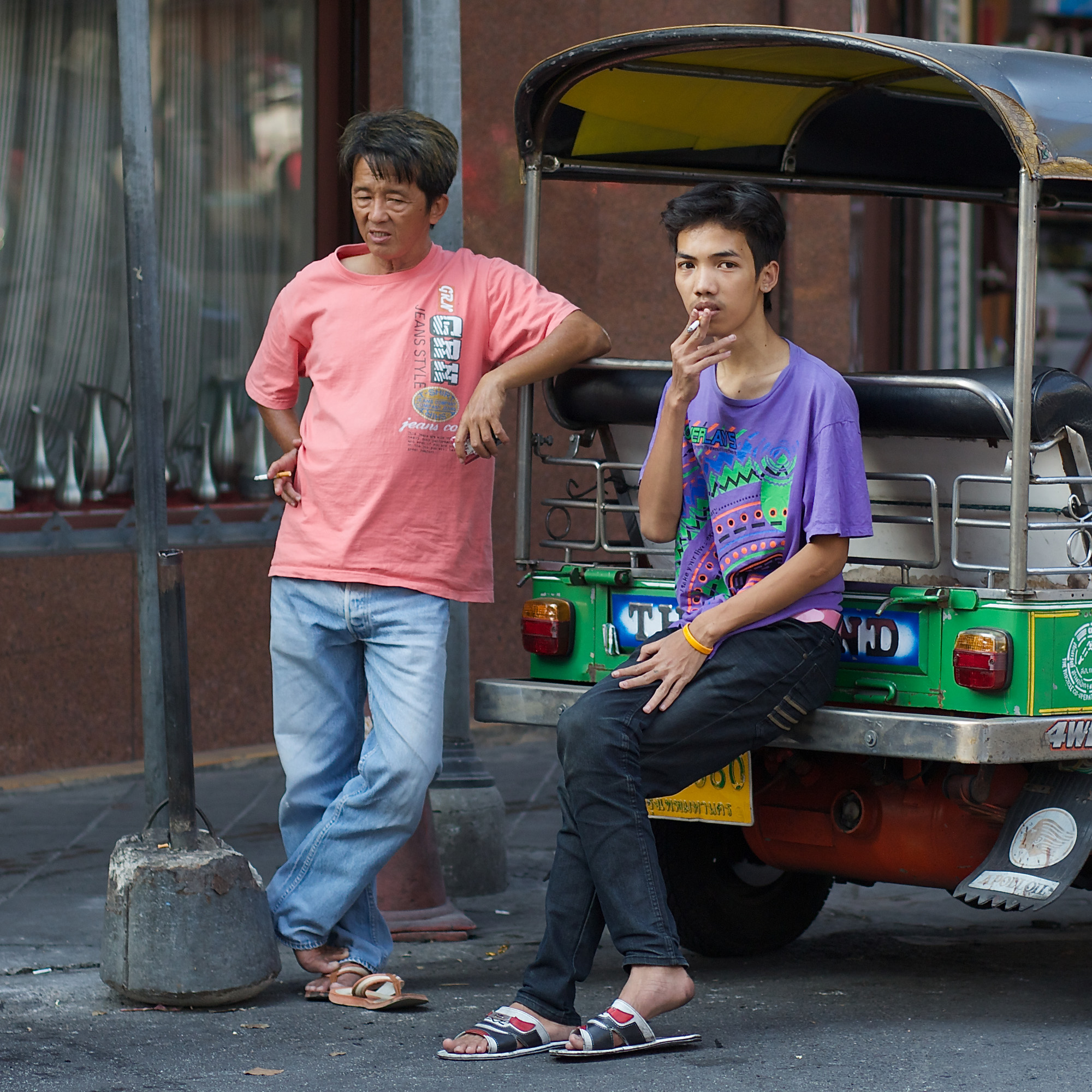When I was five years old, my parents decided to pay for some professionally taken family photos. We all got dressed up, as though for Sunday church, and I looked like Little Lord Fauntleroy after his return to Dorincourt castle.
The project was a qualified success. There was only one hint of imperfection: I was doing something odd with my hands, crossing my fingers in a peculiar manner. All these years later I distinctly remember what I was thinking at the time. “When I’m grown-up I’ll recall this moment because I’m crossing my fingers.”
Hey, it worked! Maybe even then I understood something about photography. Tiny, off-key details can be the making of a photo, turning it from being a run-of-the-mill picture into something exceptional.
So do I have any shots of people making odd shapes with their fingers? I certainly do.
Dress Shop Duo
The featured shot (above) is one of my personal favourites. I used it as the basis for an art work, bleaching out the colours into two shades of monotone, turning two of them into negatives, and cutting the images into twenty-one segments while retaining the original composition.
The result was “Dress Shop Four,” a set of four, framed, limited edition prints. Alternatively, the original version (the one you see) stands on its own: capturing a moment of boredom in a fashion shop just before closing time.
The two women are engrossed in a discussion about hands. Can it be about a broken finger nail or something more serious? For the onlooker, it doesn’t matter too much. Only the action matters. Every bit of attention is directed towards the hands — not just those of the woman on the right but also those of the other woman who clasps her own hands nervously together.
Because of the contrast in the poses of the women, we’re more inclined to notice the contrast between the left and right sides of the image. On the right, on the customers’ side of the shop, stands a row of impeccably presented carrier bags dressed up with ribbon handles. On the left, in the admin area, are calendars, notepads, phones, memos, handbags, paper clips, payment systems, fax machine, internet router, scissors, glue, calculator, adapter — all on display even though such things are meant to be invisible to the customer.
Indeed, the items probably are invisible to the two women who don’t notice them because they’re such familiar objects. Yet everything else in the store is squared away, with “storage” being the theme of the design. The multiple drawers and closed suitcases are just an intregral part of the designer’s concept, not something to be appied in any practical sense. After all, three of the drawers at the top left are placed on their side so that any contents — if they had contents — would fall out.
I’m beginning to think the shop is a brilliant work of art in its own right. Perhaps the knick-knacks in the office area have been placed there deliberately to show the workings of the business — rather like the inside-out architecture of the Lloyds building in London.
The Smokers
Out on the street, I found two men lighting up cigarettes. They’re as far from the world of fashion as you can get, but, like the two women, they’ve assumed poses that direct attention to their hands rather than their clothes.
The man sitting down on the right is about to draw deeply on his cigarette and I’ve caught his elegant gesture mid-movement. It would have made a good advertising shot, thirty years ago. As it is, the young smoker disrupts the photo — just as I did as a boy — by splaying the fingers of his other hand. Meanwhile, the older man looks tired and removes one foot from his sandal to stretch his toes.
I was fortunate that the colours of the tee-shirts harmonised with each other and with the green of the tuk-tuk. Nearly everything else in the image is fairly neutral — including the row of curious vases in the window on the left. The heavy concrete base of a sign that’s long since disappeared anchors the image, giving it stability. Converging verticals, for once, are not a distortion of the lens — but there in reality — and they echo the angles of the men’s legs which form a triangle at the bottom of the image.
Too much analysis? Probably, but I had to explore why I find the image satisfying.
On the other hand, maybe it holds my attention because I was once a heavy smoker myself. You can never really kick the habit entirely.

